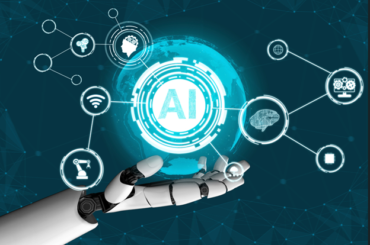
Successful service businesses understand that the best AI deployments are all about reliability and uptime. When your ultimate goal is to serve customers, failure is simply not an option.
When an AI demo fails on stage, audience members share a laugh. But when AI fails in the field, no one is laughing.
At Meta’s Connect September 2025 keynote, their new AI glasses glitched (twice) in front of a packed audience. It was awkward, sure, and Mark Zuckerberg was frustrated, but the crowd giggled, and the demo continued.
When you’re using AI to help resolve critical equipment, like a ventilator or a generator, for example, failure isn’t that easy to digest. When a system goes down or gives a wrong answer, the ripple effects can cost real money. Even worse, certain technology fails can put human lives in danger. For people who maintain industrial machinery, medical equipment, or manufacturing lines, failure just isn’t an option. As AI plays a bigger role in how work gets done, businesses must make sure they’re ready for the real world.
See also: Breaking the Barriers to AI Maturity
Rethink “uptime”
In today’s service environment, uptime is about keeping operations running smoothly. It’s about anticipating problems, not just reacting to them.
Our own research has shown that top field service organizations, for example, resolve issues in just two days, while bottom organizations take four times longer. And when technicians have a comprehensive complement of machine data, they can act before the customer even knows there’s a problem, guarding against failures and delays that are not just inconvenient – they can cost customers millions in lost productivity and customer churn.
Ground AI in reality
As more organizations in the manufacturing and service world lean on AI, it’s becoming common knowledge that real intelligence comes from combining that data with human experience.
The best AI for this industry doesn’t just read logs or sensor data – it learns from technician notes, senior techs, call transcripts, service history, and work orders, and understands how people actually talk about issues in the field. In the real world, there can be hundreds of thousands of ways to describe or fix a problem. Many agentic AI solutions now possess the capacity to parse information for nuance. These systems can tell when a squealing motor might need more than just oil.
With that level of contextual intelligence built in, AI can guide anyone, regardless of experience, toward the right answer fast. And by providing recommendations grounded in a deep understanding of the problem, AI agents can help businesses prevent costly failures that stem from incomplete or disconnected information.
Keep humans in the loop
One thing we’ve all learned—both from reality and from movies such as Terminator – is never to rely completely on automation. The smartest systems are the ones that keep humans in control using human-in-the-loop validation, guided workflows, and adaptive prompts that evolve over time.
In service departments, this balance matters. The most sophisticated AI engines can be trained to pick up nuances in language and expression, but a technician’s intuition, built over years on the job, can still catch what an algorithm might miss.
Companies that embrace AI should be using the technology to amplify human intuition, not replace it. Keeping humans in the mix is another way to protect against failure.
Break down silos
For years, service and IT leaders have battled disconnected systems. ERP and CRM tools helped, but only to a point.
Agentic AI has changed that. By unifying structured and unstructured data – from IoT sensors to technician notes to historical service logs – it creates a single source of truth that everyone can use. This allows teams to move from reactive problem-solving to proactive prevention. When insights flow freely between service, engineering, and IT, small issues are resolved before they cascade into major downtime.
What service leaders can do now
Integrating AI into mission-critical environments isn’t about chasing trends – it’s about creating systems that are trustworthy, contextual, and resilient. To get there:
1) Start by identifying your top challenges and use cases for which you want to solve. Focus AI investments where they can have the greatest operational and business impact.
2) Break down data silos. Connect service records, data streams, and human knowledge into one ecosystem, so your AI has full context.
3) Choose AI that learns from your people. The right platform should understand how your technicians talk, diagnose, and make decisions—not just read logs.
4) Keep humans in the loop. Use AI to enhance judgment, not replace it. Build feedback loops so the system gets smarter with every interaction.
5) Measure success by reliability, not hype. The goal isn’t flash – it’s fewer failures, faster fixes, and better customer outcomes.
Successful service businesses understand that the best AI deployments are all about reliability and uptime. When your ultimate goal is to serve customers, failure is simply not an option.































